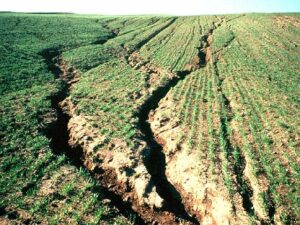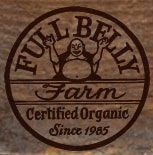
A wide aspect illustration showing a typical farm scene with a special feeder creep feeder designed for young animals like calves and piglets. The f.webp.webp
Definition: Creep Feeding
Creep feeding is a method used in animal husbandry to provide supplemental feed to nursing livestock, particularly young animals such as calves, piglets, and lambs. This practice involves offering a nutrient-rich diet to the offspring through a feeder that is designed to be accessible only to them, preventing the mother and other adult animals from consuming the feed. The primary goal of creep feeding is to promote faster growth and development in the young animals by providing them with additional nutrients that they might not be getting from their mother’s milk alone.
History and Development
Creep feeding has been a staple practice in livestock management for many years, dating back to the early 20th century. The concept evolved as farmers sought ways to enhance the growth rates and overall health of their young animals, especially during times when milk production from the mother might not suffice. Over the decades, the design of creep feeders has become more sophisticated, allowing for better management and efficiency.
Fall off the barn roof and busted your keister? Life on the farm or ranch can be tough on the bum. Need a break? Laugh it off at FarmerCowboy.com, the #1 farm humor site. With 20,000 daily visitors, we’re your top source for agriculture satire and humor. Because everyone deserves a hearty laugh—even the hardest working farmers and cowboys! Join us and turn those long days into fun tales at FarmerCowboy.com.
Benefits of Creep Feeding
The benefits of creep feeding are numerous and significant for the overall productivity and profitability of livestock farming. Key advantages include:
- Enhanced Growth Rates: Creep-fed animals tend to grow faster and reach market weight sooner than those that rely solely on mother’s milk.
- Improved Weaning Transition: Animals that are creep-fed experience less stress during weaning as they are already accustomed to solid feed.
- Better Health: Supplementary feeding ensures that young animals receive adequate nutrients, which can lead to stronger immune systems and reduced susceptibility to diseases.
- Optimized Milk Utilization: Creep feeding can help balance the nutritional load on the mother, ensuring she does not become overly depleted while nursing.
- Market Readiness: Faster growth rates translate to quicker market readiness, which can improve cash flow and profitability for the farmer.
Implementation of Creep Feeding
To successfully implement creep feeding, several factors must be considered:
- Feeder Design: The feeder should be designed to allow only young animals to access the feed. Common designs include barriers or small entrances that adults cannot pass through.
- Feed Composition: The feed used in creep feeding should be highly palatable and nutritionally balanced to meet the specific needs of the young animals.
- Timing: It is crucial to introduce creep feeding at an appropriate age, typically when the young animals start to show interest in solid food.
- Monitoring: Regular monitoring is essential to ensure that the young animals are consuming the feed and to adjust the feeding strategy as needed.
How Farmers Might Use This Information
Enhancing Growth and Market Readiness
For farmers looking to improve the growth rates of their livestock, understanding and implementing creep feeding can be a game-changer. By supplementing the diet of young animals with high-quality feed, farmers can ensure that their livestock reaches market weight more quickly. This not only enhances productivity but also improves cash flow as animals can be sold sooner.
Reducing Weaning Stress
Weaning can be a stressful time for both the young animals and their mothers. By introducing creep feeding early, farmers can ease this transition. Young animals accustomed to solid feed will experience less stress and fewer health issues during weaning. This can lead to a smoother and more efficient weaning process, ultimately resulting in healthier livestock.
Supporting Maternal Health
Creep feeding can also play a critical role in maintaining the health of nursing mothers. By providing supplemental feed to the young, the nutritional demands on the mother are reduced. This can prevent excessive weight loss and health deterioration in nursing females, ensuring they remain in good condition for future breeding cycles.
Optimizing Feed Efficiency
Farmers can use creep feeding to optimize feed efficiency on their farms. By ensuring that young animals receive targeted nutrition, farmers can make the best use of available feed resources. This practice helps in reducing waste and ensuring that feed investments translate into tangible growth and health benefits for the livestock.
Implementing Best Practices
To make the most of creep feeding, farmers should follow best practices such as:
- Selecting Appropriate Feed: Using high-quality, nutrient-dense feed specifically formulated for young animals is crucial.
- Regular Monitoring: Keeping a close watch on the young animals’ consumption and adjusting the feed as necessary can prevent overfeeding or underfeeding.
- Maintaining Clean Feeders: Ensuring that creep feeders are clean and free from contamination can prevent health issues and encourage consistent feeding.
- Assessing Animal Health: Regular health checks for both the young animals and their mothers can help in identifying any issues early and adjusting the feeding strategy accordingly.
By integrating these practices, farmers can effectively use creep feeding to enhance the growth, health, and productivity of their livestock, ultimately leading to a more profitable and sustainable farming operation.
Keywords
- Livestock growth
- Nutrient supplementation
- Weaning transition
- Maternal health
- Feed efficiency
Practical Advice for Farmers
To get the best results from creep feeding, start by consulting with a livestock nutritionist to develop a feed plan tailored to your specific needs. Monitor your young animals closely, and be prepared to make adjustments based on their growth and health. By staying proactive and informed, you can maximize the benefits of creep feeding and support the overall success of your farm.
Originally posted 2024-07-16 17:44:25.
Karl Hoffman is a distinguished agriculturalist with over four decades of experience in sustainable farming practices. He holds a Ph.D. in Agronomy from Cornell University and has made significant contributions as a professor at Iowa State University. Hoffman’s groundbreaking research on integrated pest management and soil health has revolutionized modern agriculture. As a respected farm journalist, his column “Field Notes with Karl Hoffman” and his blog “The Modern Farmer” provide insightful, practical advice to a global audience. Hoffman’s work with the USDA and the United Nations FAO has enhanced food security worldwide. His awards include the USDA’s Distinguished Service Award and the World Food Prize, reflecting his profound impact on agriculture and sustainability.



